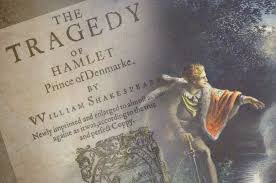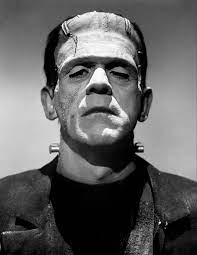Hello Everyone, I'm a student of the Department of English,M.K.B.U. This blog is a part of a thinking activity which is given by Dr.Dilip Barad Sir. This blog is based on Cultural Studies.
What is Cultural Studies :-
Cultural studies, also called the cultural sciences, is an interdisciplinary field or scientific branch that examines the dynamics of contemporary culture and its historical foundations. Cultural studies researchers generally investigate how cultural practices relate to wider systems of power associated with, or operating through, social phenomena. These include ideology, class structures, national formations, ethnicity, sexual orientation, gender, and generation. Employing cultural analysis, cultural studies views cultures not as fixed, bounded, stable, and discrete entities, but rather as constantly interacting and changing sets of practices and processes. The field of cultural studies encompasses a range of theoretical and methodological perspectives and practices. Although distinct from the discipline of cultural anthropology and the interdisciplinary field of ethnic studies, cultural studies draws upon and has contributed to each of these fields.
Cultural studies was initially developed by British Marxist academics in the late 1950s, 1960s, and 1970s, and has been subsequently taken up and transformed by scholars from many different disciplines around the world. Cultural studies is avowedly and even radically interdisciplinary and can sometimes be seen as anti-disciplinary. A key concern for cultural studies practitioners is the examination of the forces within and through which socially organised people conduct and participate in the construction of their everyday lives.
Cultural studies combines a variety of politically engaged critical approaches drawn including semiotics, Marxism, feminist theory, ethnography, post - structuralism, postcolonialism, social theory, political theory, history, philosophy, literary theory, media theory, film/video studies, communication studies, political economy, translation studies, museum studies and art history/criticism to study cultural phenomena in various societies and historical periods. Cultural studies seeks to understand how meaning is generated, disseminated, contested, bound up with systems of power and control, and produced from the social, political and economic spheres within a particular social formation or conjuncture. The movement has generated important theories of cultural hegemony and agency. Its practitioners attempt to explain and analyse the cultural forces related and processes of globalisation.
During the rise of neoliberalism in Britain and the US, cultural studies both became a global movement, and attracted the attention of many conservative opponents both within and beyond universities for a variety of reasons. A worldwide movement of students and practitioners with a raft of scholarly associations and programs, annual international conferences and publications carry on work in this field today. Distinct approaches to cultural studies have emerged in different national and regional contexts.
Cultural Studies in the reading of Poem,Play and Novel :-
In this study I am going to discuss this poem,Play and novel with the perspective of cultural studies.
1). Helmet (Play)
2). Frankenstein (Novel)
3). To His Coy Mistress (poem)
1). Helmet :-
"Hamlet" by William Shakespeare offers a rich tapestry for analysis from a cultural studies perspective, allowing us to explore the societal norms, power structures, and ideological clashes of the Elizabethan era.
1. Political Power and Monarchy
- In Shakespeare's time, England was transitioning from the Tudor dynasty to the Stuart monarchy. "Hamlet" reflects the political uncertainties of the period, and Hamlet's internal struggles can be seen as emblematic of a nation grappling with questions of legitimacy, power, and governance.
2. Religious Context
- The play is set against the backdrop of the Protestant Reformation, which had a profound impact on England. The ghost of Hamlet's father and the moral dilemmas faced by the characters resonate with the religious upheavals of the time, questioning traditional values and moral certainties.
3. Humanism and Individualism
- The Renaissance humanist movement influenced Elizabethan culture, emphasising the worth and agency of the individual. Hamlet's internal conflicts, his questioning of the meaning of life, and his introspective nature can be interpreted as reflections of the emerging humanist ideals of the period.
4. Gender Roles and Patriarchy
- Elizabethan society was deeply patriarchal, and "Hamlet" reflects and challenges these gender norms. Ophelia's tragic fate and Gertrude's complex character offer insights into societal expectations placed on women and the consequences of deviating from those norms.
5. Revenge and Justice
- The theme of revenge in "Hamlet" can be examined in the context of the cultural importance placed on honour and justice in Elizabethan society. The play explores the moral complexities of seeking revenge and the societal consequences of such actions.
6. Class Hierarchies
- Class distinctions and courtly etiquette play a significant role in "Hamlet." The contrast between the court and the common people, as well as the intricate politics within the royal court, provides a window into the social structures and hierarchies of Shakespeare's time.
Analysing "Hamlet" through the lens of cultural studies allows us to uncover layers of meaning embedded in the text and understand how Shakespeare engaged with and challenged the cultural norms and tensions of the Elizabethan era. The play becomes a mirror reflecting the broader societal concerns and intellectual currents of its time.
In the play Helmet, if we see with the lense of cultural studies we can find class conflict, discrimination between the characters who belong to the upper Class and the characters who are coming from a lower class.
For Example :- Rosencrantz and guildenstern
Both are the minor characters but they play a vital role in the play. Both are coming from a lower class. At the end of the play they sacrifice their lives for the king, then the king doesn't have any kind of grief for them.
2). Frankenstein :-
Mary Shelley's "Frankenstein" is a rich source for cultural studies, providing insights into the societal anxieties, scientific advancements, and ethical dilemmas of the early 19th century.
1. Scientific and Technological Anxiety
- The novel emerges during a period of scientific revolution and Enlightenment thinking. Victor Frankenstein's ambitious pursuit of creating life reflects the cultural fascination and unease surrounding scientific advancements and the power they bestowed upon individuals.
- The monster, created through scientific experimentation, becomes a symbol of the unintended consequences and ethical quandaries associated with unchecked scientific progress.
2. Fear of the Other and Social Alienation
- The monster's isolation and rejection by society highlight cultural fears of the "other." The creature's appearance and the way he is treated draw attention to societal prejudices and the consequences of ostracising those who don't conform to traditional norms.
- The narrative prompts reflection on how society constructs and marginalises individuals who don't fit established norms, mirroring broader cultural anxieties about difference.
3. Gender Roles and Feminism
- Mary Shelley, a woman in a male-dominated literary landscape, contributes to the cultural discourse on gender. The novel explores the consequences of masculine hubris and the exclusion of women from scientific and creative endeavours.
- The absence of a strong maternal figure and the tragic fate of female characters underscore the societal limitations imposed on women during the early 19th century.
4. Ethical Responsibilities of Creation
- Victor Frankenstein's negligence and abandonment of his creation raises questions about the ethical responsibilities tied to scientific innovation. Cultural studies can delve into how the novel engages with moral dilemmas, exploring the consequences of playing god and tampering with the natural order.
5. Industrial Revolution and Alienation
- The Industrial Revolution's impact on society, characterised by rapid technological advancements and urbanisation, is reflected in the novel's themes of isolation and estrangement. The creature's experiences echo the alienation and dehumanisation associated with industrialization. (Chat.gpt)
By employing a cultural studies perspective, one can unravel the layers of meaning in "Frankenstein" and understand how Mary Shelley's work engages with and comments on the cultural and societal currents of her time. The novel becomes a lens through which to examine broader questions about power, responsibility, and the human condition in the context of 19th-century European culture.(chat.gpt)
This novel is based on a scientific experiment. We can connect it with the corona pandemic. In this novel victor made a creature to give happiness to all because he wants to always show happiness in each person and similarly in the corona pandemic also lots of experiments have been done to find a corona vaccine. The intention of both have to give happiness to people but in the novel victor didn't get a good result, he got the opposite response from his creature and in the pandemic also lots of hospitalised people have been die from the experiments of the corona vaccine.
3). To His Coy Mistress :-
Andrew Marvell's "To His Coy Mistress" can be examined through the lens of cultural studies, revealing insights into societal norms and values of the 17th century. The poem's exploration of love, time, and sexuality reflects the cultural dynamics of the period.
In the context of cultural studies, the speaker's attempts to persuade his mistress to seize the moment and embrace physical intimacy can be seen as a reflection of the societal expectations and constraints regarding relationships during that era. Marvell engages with the prevailing ideas of courtship, marriage, and the roles of men and women, highlighting how cultural norms influence personal desires and behaviors.
The poem's manipulation of time, particularly the use of Carpe Diem (seize the day), resonates with the cultural emphasis on the fleeting nature of life. The urgency expressed by the speaker underscores societal anxieties about mortality and the brevity of human existence, a theme that was prevalent in the cultural and philosophical discourse of the time.
Furthermore, the language and metaphors employed in the poem can be dissected through cultural studies to unveil the prevailing attitudes towards sexuality and gender roles. The coy mistress becomes a symbol of societal expectations placed on women to be reserved and modest, while the speaker embodies the societal pressure on men to be assertive and persistent in pursuing romantic interests.
In essence, "To His Coy Mistress" serves as a cultural artefact that allows us to peek into the attitudes, norms, and tensions of the 17th century. By applying the principles of cultural studies, we can unravel the layers of meaning embedded in the poem and appreciate how it reflects and challenges the cultural milieu of its time.




No comments:
Post a Comment